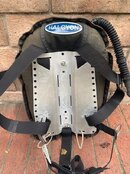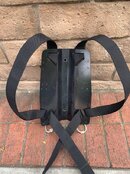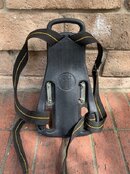A full cylinder with cylinder valve and two first stages are negatively buoyant, and will want to sink below your (wetsuited) body usually. Your weights on your weight belt are in front of your hips, which is the "correct" way, I think. (At least, this is how I wear mine.)
I think that if you spend a bit more time, you will get used to keeping your cylinder above your body, and you will wonder why it ever seemed difficult.
One other thing: using a cylinder that has a big diameter, and/or using a single tank adapter (STA) on a doubles back plate will exacerbate that tendency for you to turn turtle.
Good luck.
ETA: Make sure you are NOT over-weighted. If you're diving with a lot of air in your BC, then the shifting bubble can exacerbate the problem, too.
rx7diver
I think that if you spend a bit more time, you will get used to keeping your cylinder above your body, and you will wonder why it ever seemed difficult.
One other thing: using a cylinder that has a big diameter, and/or using a single tank adapter (STA) on a doubles back plate will exacerbate that tendency for you to turn turtle.
Good luck.
ETA: Make sure you are NOT over-weighted. If you're diving with a lot of air in your BC, then the shifting bubble can exacerbate the problem, too.
rx7diver






